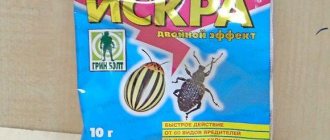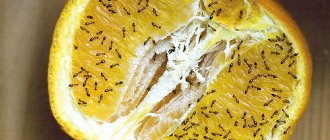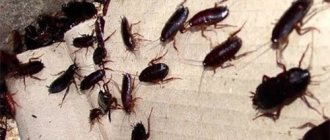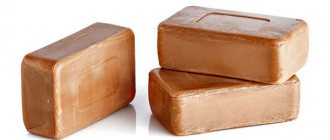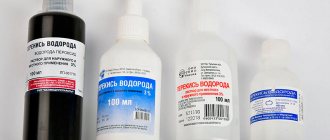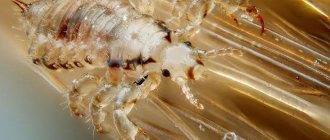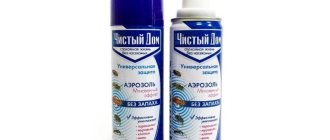How is bee venom formed?
Bee venom is a colorless liquid with an odor reminiscent of honey. It is a biologically active substance, so it dries instantly in the open air. In large quantities it is an extremely harmful and even dangerous substance for humans (the sting of 450 bees is considered fatal, 180 or more causes severe poisoning). In small doses, bee venom is used in cosmetology and medicine.
The venom is produced in the sting gland of bees. Both worker bees and queen bees have such glands - they secrete exactly the same poison. Each bee's sting contains from 0.2 to 0.8 milligrams of poison, which the insect injects when biting. For worker bees, poison serves as a means of defense for the hive and colony. The queen uses her sting solely to eliminate her rival.
A bee is unable to sting if its abdomen is filled with honey, and most often dies when stung because it cannot remove the sting.
A bee's sting is designed in such a way that once it has pierced the skin, it cannot pull it back out. Contrary to popular belief, not all bees die after being stung. If the insect carefully flies away from the victim, it will remain without a sting, but will survive. Death occurs not from the loss of the sting, but from damage to internal organs when it is removed from the bee’s body, when the insect is in a hurry to move away from the victim.
How to obtain bee venom
It takes a large number of bees to collect enough bee venom. The resource is collected in the apiary. There are 3 ways to obtain the substance:
- manually using tweezers;
- using peach oil;
- using a poison receiver.
Selecting venom manually requires a lot of time, skill and experience. When performing all actions with tweezers, insects must be caught one at a time and gently pressed so that the bee splashes out the poison, but not the sting. When using oil, several bees are dropped into the jar. The method is much simpler and faster, but most insects die.
The use of an electric grid, called a poison receiver, has made life much easier for beekeepers. The device sends an electrical impulse and causes the bees to release venom without damaging the stinger. In this way, the required amount of pure poison is obtained without serious harm to the hive. A net with a poison receiver is placed opposite the hive window. After that it is turned on.
It is important to remember that injecting the poison irritates the bees in itself, so approaching the hive after collecting the poison without special equipment is dangerous.
Composition and benefits
The poison consists of a number of substances, protein compounds and amino acids. Its composition is complex and not fully understood. Scientists have been conducting research for decades, discovering new components and properties of the unique liquid. The poison is based on non-toxic proteins, the active components are protein groups, which include melittin, phospholipase and hyaluronidase. Additional active elements of the poison are:
- acid phosphatase;
- amino acids (18 out of 20);
- phosphate, sulfuric and other inorganic acids;
- microelements.
The beneficial properties of bee venom have been known since ancient times. Bee stings were used primarily in oriental medicine in ancient India, China and Greece. Medical scientists became interested in the properties of the substance in 1930. Currently, the component is widely used in medicine and cosmetology. The poison has a positive effect on blood vessels and joints, and is at the same time a warming agent, an antibiotic and a stimulant for nerve endings.
The human body's reaction to a bee sting
Bee venom can be both harmful to the human body and useful in case of a bee attack. After a bite, the body reacts negatively to irritation. The process is accompanied by quite unpleasant sensations and pain. When the poison begins to act, swelling occurs.
When bitten, the substance enters the cells, partially or completely destroying them. The active components act on red blood cells, accelerating blood circulation for faster movement of the poison. In addition, it increases the permeability of blood vessels for faster absorption.
After a bite, the immune system is activated, which causes swelling. In large quantities, the poison provokes a strong negative reaction in the form of weakness, nausea and a slight increase in temperature.
What effects does bee venom have on the human body?
The variety and strength of the effects of bee venom on humans depends on the following factors:
- volume of poison;
- number of bites;
- affected areas;
- age and personal sensitivity of a person.
There have been many recorded cases where people without health problems easily endured up to a dozen simultaneous bites. However, in special cases, death can occur even after one bite.
Mild signs of bee venom poisoning in the human body include:
- weakness in the body;
- headaches;
- increase in body temperature;
- skin rash.
With serious intoxication of the body, symptoms such as:
- stomach pain;
- nausea and vomiting;
- hypotension;
- seizures and temporary deafness;
- depression of the respiratory organs (in special cases provokes death).
An adult dies when about 90 milligrams of bee venom enters the body, with a severe form of intoxication starting at 35 milligrams. Children, pregnant women and people over 50 years of age have the least resistance to apitoxin.
Bee poison treatment
Treatment with bee venom is called apitherapy. The techniques are used for diseases of the joints and blood vessels, which are affected by the poison. Initially, the treatment method was common in folk medicine. In the middle of the 20th century, scientists also paid attention to it. Currently, bee venom is also used in official medical practice. Many medicines include bee venom or its components.
Doctors believe that bee venom is a unique immunostimulant, which has a particularly beneficial effect on joints.
Treatment methods
Several methods are used to treat diseases with bee venom. Before starting a health course, doctors diagnose diseases, collect the necessary tests and find out whether the patient has an allergic reaction to the components of the poison. After this, the optimal treatment method is selected.
Apitherapy or treatment through bee stings is a traditional method. In this case, the course begins with the sting of one bee, after which the dosage of poison is gradually increased. Doctors carefully monitor the dynamics of treatment and the condition of the body, so the treatment is harmless and almost devoid of unpleasant sensations.
In addition to bee stings, there are the following methods of treatment with bee venom:
- Rubbing ointments - usually used for local treatment or at certain points in the body - accumulation of nerve cells. The method is quite effective and absolutely painless.
- Inhalation is the inhalation of water vapor along with the volatile fraction of the poison.
- Electrophoresis is the delivery of poison to the body using electric current.
- Intramuscular administration of small doses of drugs. Usually used for local treatment, for example, joints.
- Preparations in tablets or capsules are the simplest method, but ineffective, since the poison is partially neutralized by gastric juice.
Experts note that joint treatment with drugs based on bee venom and the use of honey significantly increases the effectiveness of therapy, accelerates the effect of the poison and has a beneficial effect on the body as a whole.
You can learn more about the methods and methods of treating common and dangerous diseases with bee venom by watching this video:
↑ Chemical composition of bee venom
Bee venom
-apitoxin (from the Greek word "Apis" - bee and "toxikon" - poison) is a colorless transparent colloidal liquid with a characteristic odor reminiscent of honey and a bitter, burning taste. The reaction of the poison is acidic, specific gravity 1.131. Dry matter in bee venom is 41%.
The chemical composition of bee venom is very complex
and has not been fully studied. Most researchers believe that bee venom is a complex complex of fat-like substances, minerals, amino acids and proteins.
The protein complex of bee venom can be divided into three main fractions
: zero (F - 0), fraction 1 (F - 1) and fraction 2 (F -2). Proteins of the zero fraction are devoid of toxic effects and are ballast substances of bee venom. The chemical nature of the proteins in the bullet fraction is not yet known.
Faction 1
bee venom is toxic and is a heat-resistant protein with a molecular weight of 35,000 called melittin.
Melittin
is considered the main active principle of bee venom. Most of the changes that occur in the body when stung are caused by the action of melittin on the nervous system, muscles, blood and circulation. When in contact with blood, melittin causes hemolysis (decomposition of red blood cells). Melittin dilates blood vessels. In addition, melittin also has a local irritant effect, leading to the development of an inflammatory reaction at the injection site. Melittin is resistant to acids, alkali, high and low temperatures. 13 amino acids were isolated from fraction 1: alanine, glycocol, leucine, isoleucine, tryptophan, arginine, glutamic acid, aspartic acid, etc.
Faction 2
It has relatively little toxicity when administered intravenously; it contains 18 amino acids, 13 of which are similar to the acids of fraction 1, and five are amino acids: methionine, histidine, phenylalanine, tyrosine, cystine. In addition, two very active enzymes were isolated from fraction 2: phospholipase A and hyaluronidase. The first breaks down lecithin, which is part of the cell membranes, which can lead to cell damage, even to their complete collapse. By acting on red blood cells, phospholipase (lecithinase) causes their hemolysis. The second enzyme of fraction 2, hyaluronidase, increases the permeability of blood vessels, causing rapid absorption of the poison when stung by bees and enhancing the local effect of the poison.
Fraction 2 inhibits one of the enzymes necessary for blood clotting - thrombokinase
, resulting in reduced blood clotting. Therefore, in large doses, bee venom causes hemorrhages (bleedings) in internal organs.
Under the influence of high temperatures, bee venom enzymes are destroyed.
The amino acids contained in bee venom have a certain effect on the body. For example, methionine affects fat metabolism
, prevents fat deposition in the liver, etc.
acetylcholine and histamine) have been isolated from bee venom
), as well as
inorganic acids
(formic acid, hydrochloric acid, orthophosphoric acid), which cause a burning sensation when stung by a bee. Bee venom contains relatively little histamine (0.06-1%), while the amount of acetylcholine exceeds its content in all other animal tissues. Histamine and acetylcholine have a versatile effect on the human body and, in particular, dilate blood vessels, increase the permeability of blood vessels, lower blood pressure, etc.
Bee venom contains the following chemical elements:
: hydrogen, carbon, oxygen, nitrogen, potassium, calcium, iron, magnesium, phosphorus, copper, zinc, sulfur, manganese, iodine, chlorine.
The complexity of the chemical composition of bee venom also determines the complexity of its effect on the human body.
Bee venom is resistant
to the action of acids and alkalis, to temperature fluctuations. Heating to 100°C and freezing do not change its composition. However, when taken orally, bee venom is destroyed under the influence of digestive enzymes.
In air, the poison dries out very quickly, but even in dry form it remains active for a number of years. Dried bee venom resembles gum arabic in appearance.
Bee venom is a very strong disinfectant
: even at a dilution of 1:50,000, bee venom is sterile, that is, it does not contain microorganisms.
The antibacterial properties of bee venom are among those little studied and have not yet been used in medicine. There are only isolated attempts to study bee venom as an antibacterial substance. As a result of work carried out in this direction, it was established that the antibacterial effect of bee venom
applies to a wide variety of microorganisms: streptococci, staphylococci, Escherichia coli, diphtheria causative agent, tuberculosis bacillus, etc. The antimicrobial properties of bee venom are preserved when heated to 100° for 10 minutes.
The antibacterial properties of bee venom are preserved in ready-made preparations, which gave I.V. Kononenko the basis to use his proposed preparation of bee venom of Milessia as a means to combat diphtheria bacilli carriage
. The results were very successful.
For what diseases is bee venom used?
The unique substance has a diverse effect on the body in several directions at once, the main ones being the cardiovascular and nervous system. Therefore, bee venom treatment is used for diseases such as:
- multiple sclerosis;
- hypertension;
- joint pain;
- skin diseases.
The venom significantly increases blood circulation, stimulating blood drainage. At the same time, it has an anti-inflammatory effect. For different diseases, treatment is prescribed in different ways.
Summarize
- Bee venom is a natural product that has grown in popularity due to its various medicinal properties.
- It has been shown to have anti-inflammatory properties, may help improve skin health, and may help treat symptoms associated with various diseases such as rheumatoid arthritis and chronic pain.
- However, using bee venom products or undergoing bee venom therapy may result in serious side effects, so be sure to use caution and consult a qualified healthcare professional before trying it.
Tags: Bee venom
About the author: Larisa Kuts
Board-certified physician specializing in family medicine, geriatrics and integrative medicine. Clinical experience as a physician ranging from disease management to family practice and emergency care.
- Related Posts
- Should you mix apple cider vinegar with honey?
- What is Ayahuasca? Experience, benefits and side effects
« Previous entry
Bee venom in cosmetology
The substance is widely used in medicine, but it is of particular value for preserving the beauty and youth of the skin. Cosmetologists add poison to products for preserving and rejuvenating the skin, moisturizing creams and restorative products.
The main active ingredient, which is valued in cosmetology, is apitoxin.
Experts note the similarity of the effect of apitoxin with Botox, despite the fact that the substance is natural and has no negative effects on the body.
The components of the poison actively affect the skin, stimulating the production of collagen and elastin. The cream gives the skin a healthy glow, smoothes out small wrinkles, and makes large ones less noticeable. In addition, bee venom is included in some lipsticks. It gives the lips a bright shade and makes the shape more expressive.
The effect of bee venom on the human body
The effect of bee venom on the human body is multifaceted. Therefore, if prescribed by a doctor in the correct dosage, bee venom can be used to treat many diseases. But it is important to remember that this is a toxin and should be used with caution.
.
How does bee venom work:
- under the influence of toxin enzymes, blood vessels dilate, which facilitates the rapid penetration of toxins into tissues; blood pressure decreases;
- sensitization of the body occurs;
important: an allergic reaction may occur during a repeated procedure;
- red blood cells are destroyed, blood hemolysis occurs;
All the properties of bee toxins are preserved in such finished products as Zdorov cream-wax or, for example, Apisatron ointment.
Experts and patients note the effectiveness, ease of use and lack of side effects of a popular product on the Russian market - cream wax from the Zdorov company.
Pharmaceutical preparations with bee venom
Preparations based on bee venom can be found not only in cosmetologists, but also in pharmacies. They are used to relieve inflammation, accelerate wound healing and eliminate pustules on the skin.
The most popular in domestic pharmacies are ointments with bee venom: “Sofya” and “Bee venom 911”. The cream is used for joint damage locally, by applying to the area of inflammation. The ointment is used for radiculitis, osteochondrosis and other diseases of the musculoskeletal system. The products have an anti-inflammatory and warming effect, are reasonably priced and highly effective.
The benefits and harms of bee venom
We recommend reading our other articles
- Potato variety Rodrigo
- Feed yeast
- Calf diseases and treatment
- How long does pregnancy last in rabbits and how many days do rabbits give birth?
Bee venom has many beneficial qualities.
- Activates the immune system, increases the body's resistance to negative external influences.
- Relieves pain. This is a very useful remedy for joints and muscles if there is severe pain in them. The components of the poison improve blood circulation. This remedy is used for arthritis, rheumatism, arthrosis, radiculitis, inflammation, varicose veins and similar problems.
- Bee venom balm removes inflammation, pus, and kills bacteria.
- Increases the number of red blood cells, dilates blood vessels and reduces the amount of cholesterol in the body. It is often used for heart conditions, including hypertension.
- Used for multiple sclerosis. Bee venom inhibits the destruction of nerve cells and forms new endings, so that the disease can be eliminated in the early stages.
- Bee venom has a positive effect on the functioning of the liver, stomach, and intestines.
- Effective for disorders of the central nervous system, insomnia.
- Cream or balm helps treat psoriasis, wounds, and acne on the body.
Interesting!
Treatment with bee venom is called apitherapy.
A wide variety of medicines and ointments for external or internal use are made from bee venom.
Among the most obvious harmful properties of bee venom are:
- destruction of red blood cells;
- blood thinning;
- disorders of mineral metabolism;
- leaching of mineral salts;
- increased glucose levels;
- the appearance of edema;
- heart rhythm disturbances,
- the appearance of protein in the urine.
Important!
Bee bites on the neck and tonsils are considered especially dangerous!
Contraindications and precautions
Despite its high effectiveness and indications, bee venom is not suitable for everyone. The body's response can be not only positive, but also negative. Side effects include itching and local skin irritation. When using drugs, body temperature may also increase by 2-3 degrees. To prevent side effects, you should strictly adhere to the dosage, do not overexert yourself, and avoid drinking alcohol during treatment.
The main contraindication to the use of bee venom and preparations based on it is allergies. About 1% of the population suffers from an allergic reaction to bee venom; it is difficult for such people to tolerate and can even lead to death.
Therefore, before treatment, a minimum amount of the drug is administered or a single bee sting is performed. If the body’s negative reactions to the poison are not identified, a health-improving course of apitherapy can be carried out. Due to some side effects, the poison is contraindicated in
- heart disease;
- tuberculosis;
- venereal diseases;
- malignant tumors;
- stomach ulcer.
During pregnancy, treatment of children or elderly people, you need to carefully monitor the patient and use the substance with extreme caution.
Treatment with bee venom should only be entrusted to specialists; under no circumstances should you self-medicate.
Bee venom is one of the most valuable waste products of bees. Being a protective mechanism and dangerous in large quantities, it is widely used in medicine, and some cosmetologists consider the components of the poison a panacea. When used correctly, the substance can significantly improve health and provide a lasting anti-aging effect.
0
0
Copy link
Sensitivity and immunity to bee venom
No more than 2% of people suffer from hypersensitivity to bee venom. It only takes one bite for them to develop a severe allergic reaction or anaphylactic shock.
Others are resistant to bee venom. Scientists have found that numerous insect bites, on the contrary, cause the body to develop immunity. Indeed, beekeepers can be stung dozens of times during the day, but they do not develop any dangerous or fatal conditions. On the contrary, they have excellent health and, as a rule, there are many long-livers among them. Experienced beekeepers with extensive experience can easily endure up to 1000 stings. Good immunity is also developed in those who undergo apitherapy courses. But with long breaks, the body’s susceptibility to the components of bee venom increases again.
The source and principle of the formation of such immunity have not been fully elucidated. Attempts to explain this phenomenon by the production of antibodies were unsuccessful. Most likely, the answer lies in the body’s adaptation mechanism to bee venom, which is why immunity is temporary.
The effect of bee venom is multifaceted, it all depends on its dosage and the individual characteristics of each organism. This substance can both lead to death and cure a serious illness. So, for some, bee venom becomes an invaluable medicine, and for others, it becomes a dangerous toxin and allergen.


